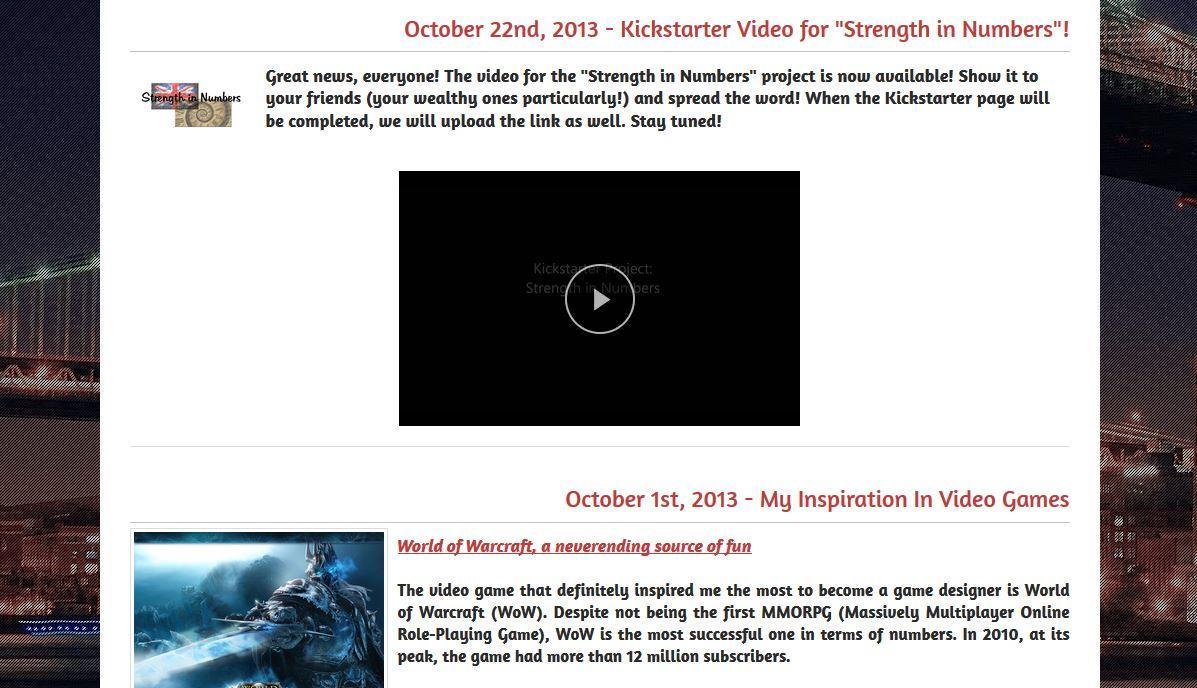Motivating Students to Write by Changing Their Medium from Paper and Pen to ICT Platforms
Keeping students motivated to practice writing and improve their English language skills is challenging. Today’s students don’t get excited over writing a text and handing it in, just to have it evaluated – and with good reason. The integration of ICT into my pedagogical strategies has allowed me to make writing activities more dynamic and appealing for students. These techniques don’t revolutionize the content, nor the objective of the action of writing, but the platforms I have used in my overall approach have definitely improved the students’ enthusiasm for writing and the creativity that is brought to the assignments. Instead of writing “for the sake of writing”, students are truly communicating again.
The key for successfully integrating ICT into my courses lies in determining the best tool for the pedagogical objective I have. It is important to think about why I want to use it, and to consider how the technology could motivate the students and benefit them. The tool used to achieve one pedagogical objective may not be the right choice for a different objective. ICT platforms are not magic wands, and the best tool will vary from one teacher to another. The success of the tool can also be different from one group of students to another. Being curious and comfortable with technology, I am able to draw on tools I have read about or tried in the past to determine which one I could match with a particular pedagogical goal. Being an English teacher in the Modern Languages Department at CEGEP Limoilou has given me the opportunity to experiment with several different platforms in order to encourage my students to practice writing more, as well as to implement the notions of revising and editing.
Twitter for Practicing Grammar
I have had success using Twitter, with my lower level students, as a means to encourage writing while having students focus on grammar, conciseness, and their online reputation. Each week I would give the students a topic and they would have to write 5 tweets about that topic, with the goal of writing grammatically correct tweets. The topics given to the students focused their writing on a specific verb tense or grammar element. Students were also encouraged to comment on the tweets of their peers, which made for interesting exchanges as I had approximately 100 students taking the course in different sections. This was a very simple platform to set up and implement. Each student was required to open a Twitter account, if they did not already have one, and to use the hashtag I created for the course in their tweets. Every 2 weeks I would take a sample of tweets (removing student names) that demonstrated common mistakes and address the errors with the whole class. These students became more mindful of their writing, which was demonstrated during the final exam as they spent more time proofreading and editing their work than students in my other courses.
 Twitter can be used for writing practice, having students focus on grammar, conciseness, and their online reputation.
Twitter can be used for writing practice, having students focus on grammar, conciseness, and their online reputation.
Glogster for Writing Short Texts
I have also had success using Glogster, which is a multimedia poster creation platform. This tool also allows me to incite students to write about a specific topic and to present the information as a creation of words, video, and photographs placed on a colourful background. Glogster’s education platform provides teachers with the ability to set up an account for free (although the free account is limited to basic usage) and gives teachers a code which is then passed on to the students. The teacher’s account becomes the space where all of the work is stored. Teachers can decide if the account is private or public. The posters I asked my students to create were based on a theme they had to determine after visiting the Morrin Centre in Old Quebec. They had to support their ideas with information found in a book that was required reading for the course. Instructions for their posters included 200 words of text and whatever other visual and media support they felt was pertinent to add. This writing assignment motivated the students and became a venue for creativity, rather than just another text to write and hand in. The posters can also be used for oral presentations as an alternative to PowerPoint or Prezi. The main drawback is that the basic account only allows for one-page posters to be created, which limits the scope of the assignment that it can be used for.
 An example of a Glogster poster, integrating text and images to enhance a writing assignment.
An example of a Glogster poster, integrating text and images to enhance a writing assignment.
Weebly for Blogging and Portfolio Projects
For larger scale assignments, I have used Weebly, a website and blog creation platform that has worked very well with portfolio-type projects. I have found that this tool has worked best with a common theme that is carried throughout most of the semester, as students can continue adding documents, text, and video to their space. The blog (comments) option provides an opportunity for students to exchange with one another. This option also permits me to make suggestions for corrections and improvement. Teachers can also create their own space to provide instructions or examples of inspiration to help the students get started.
One exciting portfolio project that worked well was with the students in video game design. They had to imagine they were ready to launch a video game product and required Kickstarter crowdfunding to get it up and running. Instead of an in-class oral presentation, students recorded and uploaded a video which explained their game and asked for funding. The competency targeted was to express an idea clearly and precisely. Students could only use words, no visual aids were allowed to help them explain the concept of their game. Using this platform for the assignment made the oral presentation component exciting and new. Students were enthused about creating the video and making a plea for their product.
Weebly allows for complex assignments integrating textual and audiovisual elements without requiring any coding skills. It is a flexible platform, giving both teachers and students editing control. When the course is completed students can decide to convert their site from a student account to a regular account, providing a means for sharing a portfolio of their creations.
 Weebly allows for complex assignments integrating textual and audiovisual elements without requiring any coding skills.
Weebly allows for complex assignments integrating textual and audiovisual elements without requiring any coding skills.
Edublogs for Expressing Opinions
Finally, I have also experimented with Edublogs for straightforward blogging use with students. This platform was purposely created for use by teachers with their classes and is structured in a way that makes it easy to follow the progress of the students in the course. Teachers and students create accounts and a code is given to link all members in a course together. Teachers have editorial rights, which allows for teacher approval before a post is published. I enjoy using this platform for various writing assignments in the same course. For example, I could ask students to watch a video or read an article and then write and post a summary, a critical review, an interview, a survey, etc. Edublogs is strictly for writing purposes, which makes it a good venue for stating their opinions and exchanging with other students in a professional manner, which I have learned is something the students really enjoy.
 Edublogs is a good venue for students to state their opinions and exchange with one another.
Edublogs is a good venue for students to state their opinions and exchange with one another.
Tips for Integrating ICT
Lessons I have learned in introducing ICT to my teaching:
- Use the platforms for most of the semester as there is an investment to be made in signing up, creating an account and learning how to use it. Make the investment worth it for yourself and the students.
- Platforms can be used for many different aspects of learning, so the more you use them, the more you will see their advantages in different pedagogical situations.
- Be sure to think the project through, and before you get started, spend time to be sure you have the right platform for the right idea (will it really work, do you have enough material to support the idea for the entire semester, etc.).
- Make sure you are familiar and at ease with the platform yourself. Simple can be as good as complex; everything depends on your idea, your purpose, and your goals and objectives.
- When experimenting with ICT, you always have to be ready for the activity not to work!
What has surprised me the most, is how involved the students become. Without much prodding on my part, the students have actually gone above and beyond what is asked. They are motivated to do the task and they enjoy doing it.
I have also been impressed with the quality of their comments to each other when using Tweets or blogs. This was an element that could have gone very wrong, but there has been a mutual respect in providing comments and feedback to one another. They want to receive meaningful comments, so in turn, they are making meaningful comments to their peers. Students love technology and the interactive aspect of online platforms really motivates them to be creative and to put a great deal of effort into the content they are producing. In turn, this motivates me to continue experimenting with ICT and to continue searching for the right tool to match with the right activity. My goal is to keep my students excited about writing and learning how to be mindful of their own work.

